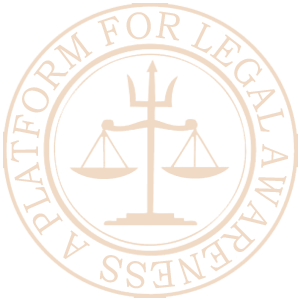Introduction:
“Justice delayed is justice denied” ~ William E. Gladstone
The traditional litigation recourse is expensive as well as time-consuming. Our judiciary is already burdened with a plethora of pending cases which require a mechanism that aids in quick disposal of cases and effective justice delivery system. The Alternative Dispute Resolution methods have been quite beneficial to cope up with the pending cases prior to the pandemic.
However, in the situation of the pandemic that we are facing right now, even the ADR mechanism becomes less convenient due to limited human to human contact, thereby exacerbating the existing problems. In this situation, the Online Dispute Resolution (ODR) method is gaining prominence day by day. ODR is that branch of dispute resolution which incorporates modern technology for the resolution of disputes between the parties. In simple words, ODR is a process which combines Information and Communications Technology (ICT) with dispute resolution methods such as Arbitration, Mediation and Negotiation. ODR processes are increasing in effectiveness as they provide their disputants with a higher edge in terms of time-saving and cost reductions which facilitates speedy justice delivery. ODR furnishes a faster, transparent and accessible option to resolve their dispute without their physical presence. There is a vital proof that the process of ODR has been widely used in this pandemic to resolve cases which directly spotlights its importance in the situation of epidemics.
Difference between ADR and ODR:
Alternate Dispute Resolution is an offline process, whereas Online Dispute Resolution is an online website procedure. A Mediator/ Arbitrator is appointed to resolve a dispute in ADR while in ODR, the complaint is filed online. Competent national authorities assess the process of ADR while advisories evaluate the process of ODR. In ADR, there is face to face communication while in ODR, the communication can be done via e-mails, calls or even video conferencing.
Legal recognition of ODR in India:
ODR was born from the coactions between ADR and ICT. Other terminologies used for ODR are:
-
Internet Dispute Resolution (iDR)Electronic Dispute Resolution (eDR)Electronic ADR (eADR)Online ADR (oADR)
Areas of ODR:
2. Disputes between employer and employee
ODR Platforms:
There are many ODR platforms which are widely used for dispute resolution. Most popular of them are:
1. CADRE or Centre for Alternate Dispute Resolution Excellence: It is a website based platform for ODR which has been resolving tenant and rental contracts disputes for many house rental applications. 2. Sama: It expedites easy access to high-quality ADR service providers and helps parties to resolve disputes online. Sama is being used as an ODR platform by various banks to resolve many disputes. 3. CODR or Centre for Online Dispute Resolution: It is an institution that manages and directs cases online end to end. 4. Agami: It is non-profit ODR platform that aspires to create better legal and judicial systems by providing time-efficient and viable dispute resolution methods.
Steps in the ODR process:
-
1. Raising of a dispute: The disputes are raised by both the parties. 2. Negotiating to reach a common consensus: The process of negotiation is initiated to help the parties in solving their disputes and reaching towards a mutual agreement. 3. Solve the claim with the help of experts: If parties are not satisfied with the negotiated terms then they can claim the same within a specified time period and appoint an arbitrator or a mediator.
-
Closing the claim: If a common agreement is reached, then the claim is closed.
-
If the case is not agreed: The parties can reopen the case in any offline form or can initiate another ODR process within a particular time span.
ODR METHODS:
1. Automated negotiation: It incorporates those methods in which technology takes over the various aspects of negotiation. It is most useful in insurance compensations and commercial activities.
Types of Automated negotiation:
• Double-blind bidding:
This process is used in resolving single monetary issues between two parties.
Offers and demands are kept hidden during the negotiation. The process starts with parties making secret offers or bids, which will be disclosed if both offers match certain common standards. The parties can usually submit three offers.
• Visual blind bidding:
This can be applied to negotiations with any number of parties and issues. The fact that “what each party is willing to accept” is kept hidden. The process gets started with exchanging visible optimistic proposals, which define negotiating ranges. The system then generates suggestions that fall within negotiating ranges. Suggestions can also be made by the parties anonymously. At the end of the negotiation session, a resolution is declared by the system. The agreement can be made based on that negotiation.
2. Assisted negotiation: When technology assists the negotiation process, it is called assisted negotiation. Here, technology acts as a mediator. It is a simple and user-friendly process.
3. Expedient Non- Adjudicative Online Resolution: If the negotiation is accepted during this process, then there is the issuance of a certificate of the final resolution, which is irrevocable proof of resolution and final settlement.
4. Adjudicative method:
• Online Arbitration:
Arbitration is a quasi-judicial process in which a third party Arbitrator is appointed. This is done online via email, Skype, Google Hangouts etc.
• Online Mediation:
Likewise, in online mediation, a Mediator is appointed who resolves the dispute online.
Conclusion:
Countries like U.S.A, China, Brazil and some European Union nations have already adopted the ODR mechanism, and millions of disputes have already been dealt with successfully without even filing a single suit in a traditional court of law. In India, still, there is some sort of reluctance seen pertaining to the usage of ODR mechanism in resolving disputes. But ODR methods have constantly proved more feasible where physical presence is not required. Apart from this, the usage of technology in our judicial systems is the need of the hour, and these ODR methods will help in speedy dispute resolution.
Disclaimer: Kindly note that the views and opinions expressed are of the author, and not Law Colloquy.
